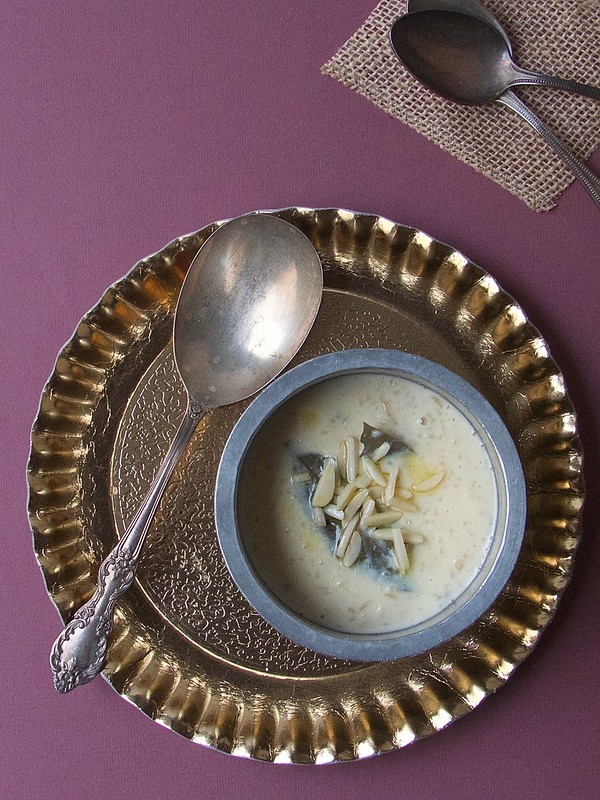The first thing comes to mind when we say Milk based sweets are the "Bengali sweets". Most of their sweet dishes, the popular ones like Rasgulla, Sandesh, Ras malai, are made with chenna - milk solids we get by curdling the milk. They form the essential base for these desserts. As per the article mentioned in Indiatimes, Portuguese introduced Chenna to Bengalis. My curiosity for getting to know, how the Bengalis became so biased with the "Diary" for their sweetmeats led to this interesting read. This article is about Chenna and how it entered the Bengali Kitchens. No matter how or why, I am deeply indebted to them and I am so grateful. I love love those milk sweets and for a long time, those were the only sweets that I ever ate. 🙂 🙂

So, for this week's BM, there are three Bengali sweets that are going to be featured. Starting the first day with the most beloved Payesh.
- 1 Litre Full fat Milk
- 3 tablespoon Rice
- 4-5 no's Cardamom pods crushed
- 2 tablespoon Nuts Pistachios, cashews, Almonds etc
- 1-2 no's medium sized Bay leaves
- 3-4 tablespoon Sugar Refer notes 3
- Rinse the rice and soak it in water for half an hour. Then drain the water and keep aside.
- Meanwhile just heat the milk. (entirely optional) (1)
- Heat a deep-heavy-bottomed vessel. Add a teaspoon of ghee and once it is hot, add the nuts and roast. Add the well-drained rice in the pan. Give it a quick stir. (2)
- Now add the milk, bay leaves and cardamom pods.
- Simmer and let the milk boil. Keep stirring frequently to prevent it from burning in the bottom.
- Once the rice gets cooked, add sugar. Keep simmering until the milk reduces to almost one-thirds and becomes very thick.
- It takes almost 45 minutes if you keep the flame real low.
- I always add slightly heated milk rather than cold one while making kheer / Payasam. This always ensures that the milk does not curdle when we add in the hot pan.
- Many of the recipes (the bengali blogs) have mixed rice and ghee, after the rice has been drained. They mention that it helps in keeping the rice grains separate and prevent it from becoming mushy and sticky. The above method also produces the same result.
- The amount of sugar gives a medium sweet dish. You can increase it as per your preference.
Check out the Blogging Marathon page for the other Blogging Marathoners doing BM# 72here



Harini-Jaya R says
Amazing payesh. Rice and milk based kheers are so common in all regions in different forms, right?
Sandhya Ramakrishnan says
What an awesome kheer. I am inviting myself over to taste some 🙂
Chef Mireille says
bay leaf is a unique addition to kheer...looks just as creamy and delicious
Pavani N says
Adding bay leaf is such a flavorful and interesting addition to ice pudding. Payesh looks amazing.
Archana Potdar says
Amazingly delicious. Love it Nisha.
Priya Srinivasan says
you are killing me with your dessert series!!! Lip-smacking good!
Priya Suresh says
Just love this irresistible payesh, how rich and creamy it looks.
Sandhiya says
Add bay leaves in sweets sounds interesting,never done that before. Payesh came out so creamy .
vaishali sabnani says
The bangla kheer is a treat by itself , the kheer looks super tempting .
The Happie Friends Potpourricorner says
Lovely Rich dessert!!
Srivalli says
I have been wanting to make the Bengali very, yet to do. The setup looks very inviting...
Srividhya Gopalakrishnan says
yummm delicious. Love your rustic serveware.